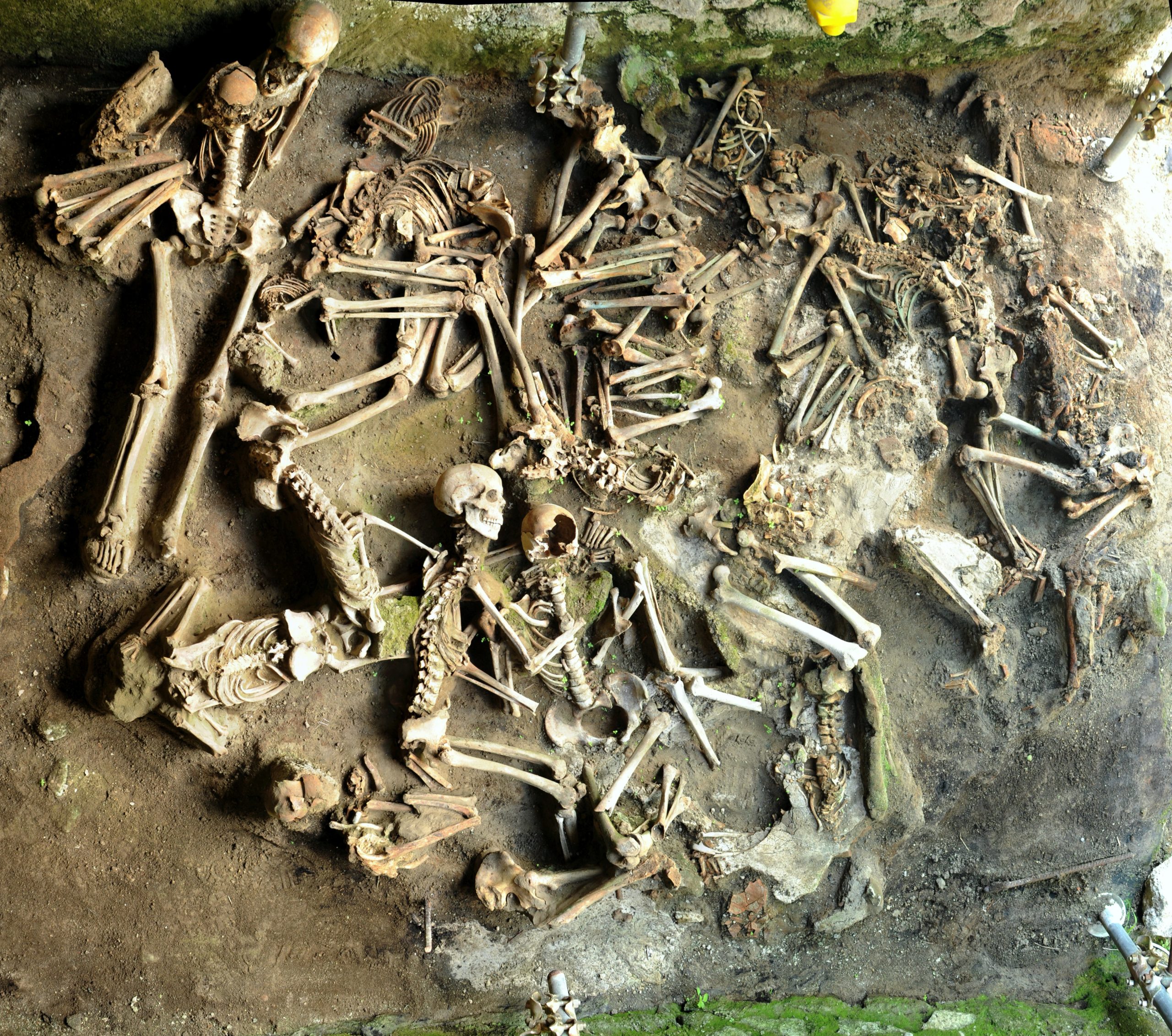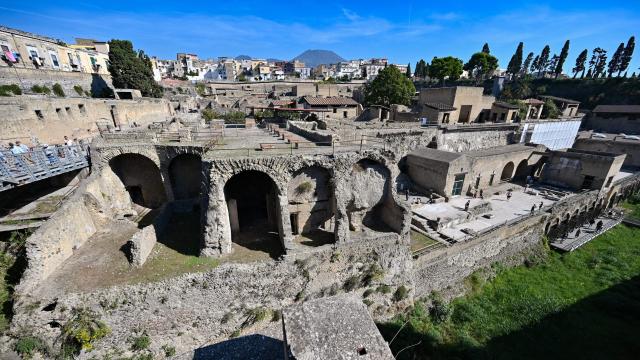The people who lived in the town of Herculaneum were killed instantly in the abominable heat of pyroclastic flows spewing from Mount Vesuvius in 79 CE. Nothing remains of their stomachs, but that hasn’t stopped archaeologists from learning about the diets of these doomed ancient Romans. In a new study, researchers looked at isotopes in their bone collagen and found, among other details, that the men ate more seafood than women.
The research team studied the remains of 17 of the 340 people who have been excavated from Herculaneum’s beach and stone vaults, where many residents fled as the volcano erupted. The 17 remains belonged to 11 men and six women. Based on the carbon and nitrogen isotopes in the amino acids in their bony remains, the team determined that the males in Herculaneum ate about 50% more protein from seafood than the women did, while females got a larger proportion of their protein from terrestrial sources — animals, fruits, and vegetables. The team’s results are published today in Science Advances.
Silvia Soncin, an archaeologist at the University of York and lead author of the paper, said in a university press release that it was previously known that males in Herculaneum had more access to fish than women, as they were more likely to be fishing and generally held a more privileged position in society, meaning they could more typically afford foods like fish.
“We don’t know if these results are specific to Herculaneum and the Bay of Naples or if they can apply to the Roman diet in general,” Soncin said in an email to Gizmodo. “However, they suggest that the Roman diet can be different from what was previously thought (e.g., mainly cereals and plant products and only small amounts of animal products and fish), since our study shows a significant contribution of proteins and calories from terrestrial animals and marine fish, the latter much higher than that consumed by populations in the Mediterranean in the 20th century.”

Diets in the Bay of Naples generally included bread, olive oil, poultry, wild game (like boar), fruits and vegetables and, of course, fish. Being right by the water, seafood was a key component of the diet and, even when fish or shellfish wasn’t being served, items were often eaten with garum, a fermented fish sauce. That diet turns up in archaeological evidence, but was never so obviously on display as when a well-preserved thermopolium, or Roman food stall, was excavated in Pompeii in 2019.
The new research builds on previous work by the same team into the diets of several of the deceased in Herculaneum. “Whilst the results of the new paper support what we found before, for the first time we are able to add numbers with uncertainty to the percentage contribution of different foodstuffs — this is a big step if we are to meaningfully compare diets through time and space,” said Oliver Craig, an archaeologist at the University of York and a co-author of the paper, in an email to Gizmodo. Craig added that the new analysis also means the team can quantify the dietary differences between individuals in Herculaneum and beyond, meaning instead of simply knowing whether a specific food was eaten by two individuals, the researchers can now know how much of each food each person consumed.
Details on diets in Herculaneum can also be compared with those in Pompeii, the more famous seaside town that suffered the same fate in 79 CE. Maciej Henneberg and Renata Henneberg, forensic anthropologists at the University of Adelaide in Australia, looked at diet variability in 31 individuals from Pompeii in 2016 and saw a similar Mediterranean diet, with men again consuming more seafood than women.
“The authors used most up-to-date methods to draw conclusions confirming the results we have published in 2016, using a larger sample of human remains,” Maciej Henneberg wrote in an email to Gizmodo. “Our results for Pompeii, together with these new findings for Herculaneum, show relative stability of nutrition in the area around Vesuvius and continued tradition of Mediterranean diet.”
The volcano, while snuffing out whole communities, ironically has preserved so much about their lives and culture. With excavations and research ongoing in the area, it’s safe to say there’s still plenty more to learn about these people beyond the dramatic way in which they died.
